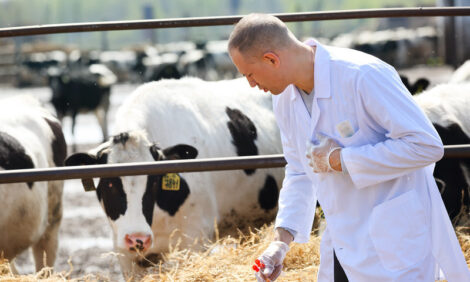



Tackle Fodder Problems in Terms of 'Grazing Days'
As the drought situation persists across the rangelands of Kansas, cattlemen should tackle fodder problems in terms of grazing days and form supplementation strategies, writes Michael Priestley.This is what Kansas State University Beef Specialist Justin Waggoner is telling farmers who are faced with bare fields as they come into a third dry year.
Despite pockets of rainfall, drought remains one of the major issues cattlemen will be faced with across the state, Mr Waggoner tells Ag AM in Kansas.
“We may be looking at a reduced number of grazing days on our pastures. In reality most producers get between 100-120 days, however this looks a little optimistic,” warns Mr Wagonner. “In response there are a number of strategies. Supplementation, pulling cows off grass early and early weaning are all considerations to look at.”
Putting stock in a dry lot is a labour intensive option, but if you want to limit damage to your rangeland then it could be a good management strategy, advises Justin.
Shedding off cattle and delivering ration on a daily basis often requires forage to be bought in but can help in the body scoring of cattle.
“If the decision is made that you want to keep your cows, it may be your best option as we come into this third year of drought,” says Mr Waggoner. “It is important at this time to monitor cow condition and body score.”
Justin warns that if your cows lose condition it is hard to put back because of where feed values are currently at.
For this reason Justin advises looking at early weaning to relieve stress on cows. This can be helpful during drought as a non-lactating cow at the first trimester of gestation is probably the easiest cow to maintain.
“The concept of weaning a calf early is weaning at the age of 108 days or earlier. Normally 150-180 days is the norm,” says Mr Waggoner. “When we take a calf from a cow we remove all the nutrient needs associated with lactation.”
This, Mr Waggoner adds, gives the farmer several days on the cow side for every week a calf is weaned early.
While winter brought the issue of protein, it is energy levels in forage that will provide the most attention in the spring.
“The primary need of cows on drought stressed pastures in a limited forage availability situation is really energy instead of protein,” says Justin.
The key thing, Justin adds, is that it’s hard for us to make a decision on what we should feed. Farmers should now be pricing supplements in terms of cost per unit of total digestible nutrients or net energy maintenance value as a means of comparing different supplementation.
Justin reassures cattlemen that while uncertainty over forage quality is an issue for beef producers, cattlemen now have more supplement options that ever before.
“As we move into spring we don’t know if the better quality forage will be in place. But we have more options than ever with cake, cubes, by-products, hay, silage as well as tubs and lick tanks.”
Justin recommends dried distillers grains and corn gluten feed as options: “These both offer a high fibre/low starch energy source and also bring protein to the table.”
“Both products fed at a typical supplementation rate of 2-3 lbs will provide almost as much phosphorous to the diet as 4 ounces of 10 per cent phosphorous mineral," says Justin.
Phosphorous can often be the most expensive supplement, concludes Justin, so utilising these options does offer cost savings.
TheCattleSite News Desk


